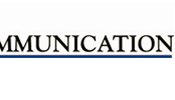

|
|
| Dramatically improving patient satisfaction Decreasing medical errors Enhancing patient compliance |
|
|
Our PIE Model of Communication
|
Preventing Medical Malpractice Medical malpractice is a nightmare for clinicians, office practices and hospitals. Time is lost and reputations are damaged. Of course, there is a significant financial impact. Excellent patient relationships directly lower the risk of malpractice. If you have a great relationship and an unexpected outcome occurs, the risk of litigation is minimized. However, if you have a poor relationship combined with an unexpected outcome, that is setting the stage for a malpractice claim. In this high-content session you will learn proven techniques to connect with patients to lower your risk of malpractice. The program also covers professionals communicating effectively with each other to reduce errors. People don't sue because they are greedy; they sue because they are angry. Anger is a byproduct of a bad relationship. We create excellent relationships by several means. In this program, you will learn proven strategies to partner with patients and not simply give orders. The session also reviews helpful ways to encourage patients to be active participants in their care. The more involved they are the less likely errors will occur that you could be held responsible. The program will cover the following topics:
Decrease your risk of malpractice by increasing the quality of your patient relationships!
|
The Center for Healthcare Communication • P.O. Box 18819 • Cleveland, Ohio 44118-0819 USA Site designed by I Am Orange Media Group |